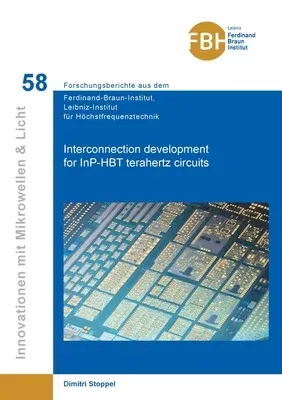For frequencies above 300 GHz applications are still in the research
state since commercially available systems are missing. This
dissertation shows three key aspects in process development that are now
part of a standard indium phosphide (InP) transferred-substrate process,
paving the way for future terahertz projects and applications. The InP
transferred-substrate process at Ferdinand-Braun-Institut (FBH) has
proven to be a promising candidate for the respective semiconductor
components. This particular process utilizes the wafer bonding
technique, which allows transferring the active monolithic microwave
integrated circuits (MMICs) onto a host substrate. Such host substrate
can be either a passive substrate that is equipped with through-silicon
vias (TSVs) or a BiCMOS wafer. Hetero-integrated approaches offer ideal
conditions to fulfill the requirements of applications regarding
complexity (BiCMOS) and large bandwidth (InP). Within this thesis, three
topics are described in greater detail: benzocyclobutene (BCB) dry etch
process development, nickel-chrome (NiCr) thin film resistor (TFRs)
development and through-silicon vias implementation. Eventually, the
newly developed plasma etch process has been successfully implemented
into standard InP processing, with a fivefold increase in etch rate at
maintained bias and anisotropy. Also, a method to suppress redeposition
formation was shown. Successful circuit measurements with implemented
NiCr resistors demonstrated the last step of TFR integration. A new
approach with bottom contacted TFRs was successfully integrated. A
laser-enabled TSV process was developed to serve as an effective and
reliable way to circumvent parasitic parallel plate modes that occur at
high operating frequency circuits.


